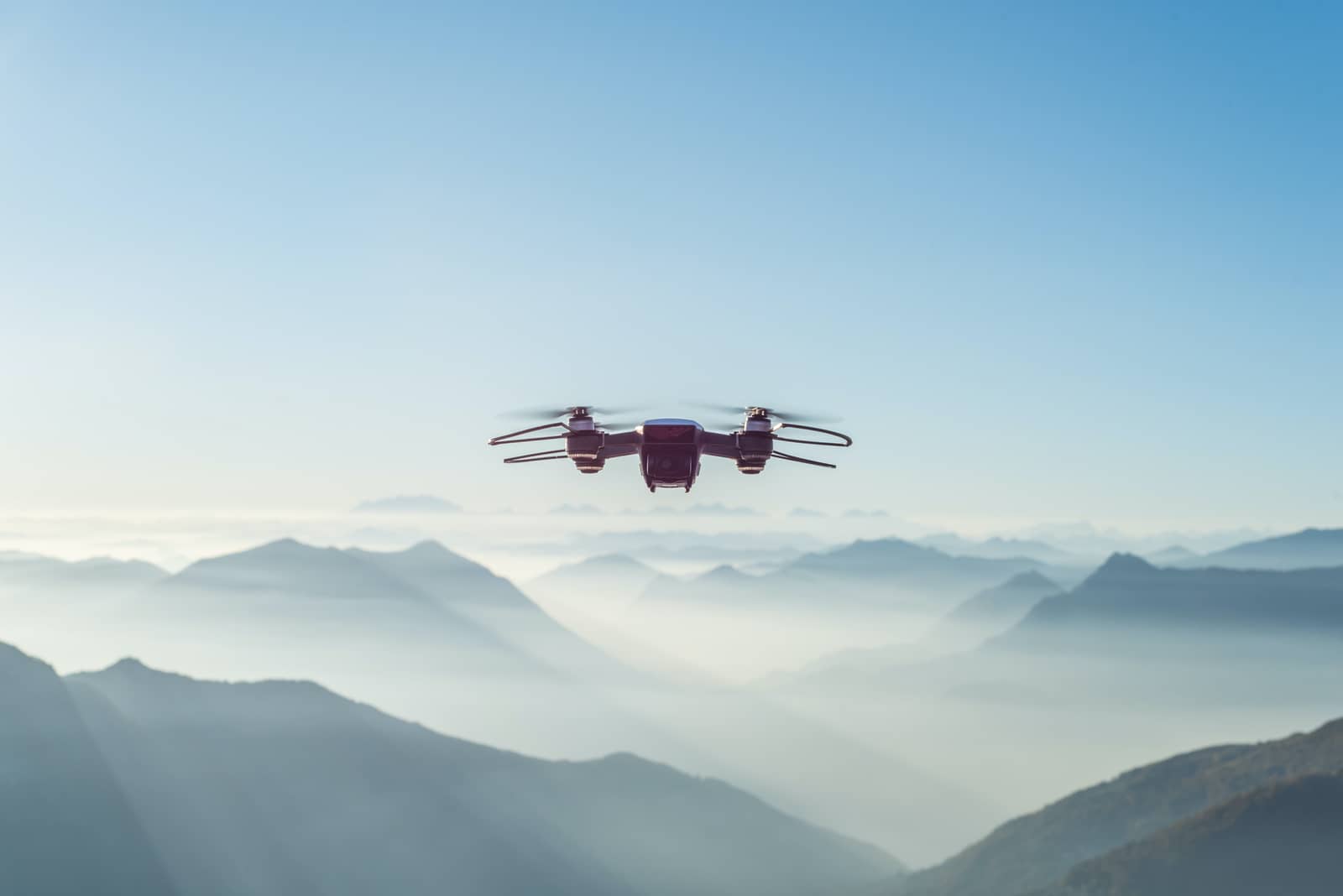As a drone enthusiast and a laptop expert, I understand that finding the best laptop for editing drone footage can be quite a challenge. With the stunning aerial shots and cinematic videos that drones can capture, it's crucial to have a laptop that can handle the demands of editing high-resolution content. Having spent countless hours reviewing an extensive laptop spreadsheet of recent releases, comparing specs and reviews (both professional and user-generated), I've narrowed down the top laptops for this specific purpose.
In the world of drone videography, high-quality footage often means working with 4K resolution and high frame rates. To edit and render these videos smoothly, a laptop with a powerful processor, dedicated graphics card, and ample RAM is essential. However, it's not all about raw power – when editing drone footage, color accuracy and display quality are also crucial factors to consider. After all, you want to make sure your videos look their best on various screens and platforms.
As someone who frequents drone videography forums and stays up-to-date with the latest trends and technologies, I know that the needs of drone enthusiasts can vary. Some may prioritize portability for on-the-go editing, while others may prefer a larger screen for a more immersive editing experience. No matter your preferences, my goal is to help you find the best laptop for editing drone footage that caters to your unique requirements and budget. So, let's dive into the top laptop options and their features to help you make an informed decision.
Power up your drone footage editing with these processors
When it comes to editing drone footage on a laptop, choosing the right processor is crucial. There are plenty of options available on the market, ranging from the latest AMD Ryzen to Intel's 13th-generation Core processors and Apple's ARM-based M1, M2, M2 Pro, and M2 Max chips.
If you're considering a MacBook, you'll need to decide whether you want an H-series or a U-series processor. H-series processors are more powerful and offer better performance, but they also come with a higher TDP rating, which means that your battery life will be shorter than if you were using an equivalent U-series processor. Overall, MacBooks are a popular option for video editors, but they're not ideal for everyone – Windows laptops are a better option for most people.
So, how much CPU power do you need for video editing? The CPU is one of the most important components in a laptop for editing drone footage because it directly impacts your timeline performance and overall editing experience. When comparing different processors, it's best to look at multi-core scores since we're dealing with video editing. This is where the Ryzen 7 and Core i7 chips excel as they have many cores available to them.
When it comes to thermal management, it's important to note that some laptop manufacturers do a better job than others. Apple and Intel chips adopted a hybrid performance/efficiency core design based on big.LITTLE, but Intel chips struggle to keep the power consumption low enough. Ryzen models are best if you need a good battery life in a PC laptop.
To rank CPUs by performance, I use Cinebench R20 scores since it's one of the best ways to measure single-core performance. However, we need to look at multi-core scores for video editing purposes. Here's what you can expect at each price level based on median benchmarks:
| Processor | Price | Multi-Core Score |
|---|---|---|
| i5-11320H | $500-$800 | 4,800 |
| AMD Ryzen 5 5600U | $800-$1,200 | 5,400 |
| i5-11500H | $1,200-$1,800 | 6,000 |
In conclusion, if you're on a tight budget, the i5-11320H will suffice for basic video editing. However, for more intensive workloads, the AMD Ryzen 5 5600U and i5-11500H are better options with higher multi-core scores. Remember to consider your usage scenario and priorities when choosing a laptop processor for editing drone footage.
Take to the skies with a killer graphics card
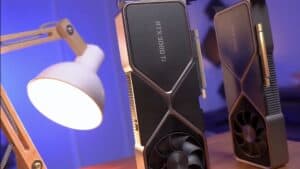
The graphics card market for laptops is dominated by Nvidia, with the recently released RTX 40 series cards starting to hit the shelves. However, most laptops still use the RTX 30 series cards, which are capable of handling video editing tasks. Desktop GPUs have become more power-hungry, widening the gap between notebook and desktop graphics cards.
For editing drone footage, a dedicated GPU is essential, as it helps to render videos faster. While it's possible to edit drone footage on a regular laptop, it takes much longer to render videos, especially with video editing software like Adobe Premiere Pro or Davinci Resolve. It's important to note that the GPU is not the only component that matters; an excellent CPU is also essential.
When comparing graphics cards for video editing, I recommend using 3DMark. It's a well-known benchmark that covers various aspects of performance, including battery life. High-end gaming laptops tend to be bulky and hot, so make sure to prioritize thermal design and airflow if you're looking for a gaming laptop.
Here are my recommendations for GPUs for video editing in laptops:
| Minimum | Recommended | High-End |
|---|---|---|
| GeForce RTX 3050 (Median price: $999) | GeForce RTX 3060 (Median price: $1,399) | GeForce RTX 2080 SUPER (Median price: $2,399) |
In summary, a dedicated GPU is essential for editing drone footage on a laptop. The GPU is not the only thing that matters, so make sure to prioritize an excellent CPU and thermal design when choosing a laptop. Use 3DMark to compare various graphics cards, and consider the minimum, recommended, and high-end options I've listed when selecting a GPU for video editing in laptops.
Flying High with the Right Laptop: Answers to Your Top Editing Questions
Q: What are the best laptops for editing drone footage?
The best laptops for editing drone footage are the ones that meet the recommended specifications for video editing. Based on these recommendations, we recommend the Lenovo Legion 5 Pro, the GIGABYTE AORUS 15 XE4, the ASUS ROG Strix Scar, and the ASUS ROG Strix Scar G733CX-XS97.
What specs do I need in a laptop for editing drone footage?
For editing drone footage on a laptop, you need at least an i5-11320H processor, 16GB of RAM, and a GeForce RTX 3050 graphics card. If you want to achieve better performance and faster render times, we recommend going for the AMD Ryzen 5 5600U processor, 32GB of RAM, and a GeForce RTX 3060 or even a GeForce RTX 2080 SUPER graphics card.
How much RAM do I need for editing drone footage on a laptop?
The minimum RAM requirement for editing drone footage on a laptop is 16GB. However, if you're working with large 4K files or using multiple editing software at once, 32GB or 64GB of RAM would be a better option to ensure smooth and efficient editing.
Is a dedicated GPU necessary for editing drone footage?
Yes, a dedicated GPU is necessary for editing drone footage on a laptop, especially if you're working with 4K or high-resolution footage. A dedicated GPU will significantly improve the rendering speed and overall performance of your laptop.
What is the best laptop for editing 4k drone footage?
The ASUS ROG Strix Scar G733CX-XS97 is the best laptop for editing 4K drone footage. It has an i5-11500H processor, 64GB of RAM, and a GeForce RTX 3080 graphics card, making it a powerful machine for handling large video files and intensive video editing tasks.
What storage options are best for editing drone footage on a laptop?
For editing drone footage on a laptop, we recommend using solid-state drives (SSD) instead of traditional hard drives (HDD). SSDs are faster, more reliable, and less prone to crashing during editing. Ideally, you should aim for a laptop with at least 512GB or 1TB of SSD storage space.
Can a laptop handle editing drone footage?
Yes, a laptop can handle editing drone footage, as long as it meets the recommended specifications for video editing. However, keep in mind that laptops are not as powerful as desktop computers, so you may experience slower rendering times and reduced performance compared to a desktop workstation.
What are the minimum requirements for a laptop to edit drone footage?
The minimum requirements for a laptop to edit drone footage are an i5-11320H processor, 16GB of RAM, and a dedicated GPU such as the GeForce RTX 3050.
Is MacBook Pro good for editing drone footage?
Yes, the MacBook Pro is a good option for editing drone footage, especially if you're using Final Cut Pro X software. However, make sure to get the version with at least 16GB of RAM and a dedicated GPU such as the AMD Radeon Pro 5600M for optimal performance.
How to choose a laptop for editing drone footage?
When choosing a laptop for editing drone footage, consider the recommended specifications for video editing and your budget. Look for a laptop with a powerful processor, dedicated GPU, and at least 16GB of RAM. Additionally, SSD storage, a high-resolution display, and good battery life can be helpful for video editing on-the-go. Consider checking out our recommended laptops, including the Lenovo Legion 5 Pro, the GIGABYTE AORUS 15 XE4, and the ASUS ROG Strix Scar series.
Taking Flight: How Much RAM Do You Need for Editing Drone Footage?
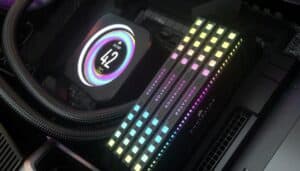
When it comes to editing drone footage, having enough RAM is crucial for a smooth editing experience. RAM, or Random Access Memory, is responsible for temporarily storing data that your computer needs to access quickly. The more RAM your laptop has, the more data it can store and access without needing to constantly read from the slower hard drive.
For most projects, 8 GB of RAM is simply not enough for video editing. 16 GB is the ideal minimum for most users, and 32 GB is necessary only if you're working with RAW footage or 4K footage.
While DDR5 is the latest and greatest in memory technology, there's no real difference in performance between DDR5 and DDR4 when it comes to video editing. So, if you're on a budget, don't feel like you have to shell out extra for DDR5.
In addition to RAM, other components impact performance as well, such as the CPU and SSD. A powerful CPU will help with tasks like rendering, while a fast SSD will help with loading and saving large video files.
If you're looking for a laptop that can last you for years to come, consider getting one with upgradable RAM. This way, you can save money now and upgrade later when your needs change.
Here are some recommendations for RAM configurations based on your budget:
| Budget | RAM Configuration |
|---|---|
| Low | 16 GB DDR4 |
| Mid-range | 32 GB DDR4 |
| High-end | 64 GB DDR4 or DDR5 |
Remember, having enough RAM is just one part of the equation when it comes to editing drone footage. Consider all the components of a laptop to ensure a smooth and efficient editing experience.
5 Best Laptops for editing drone footage
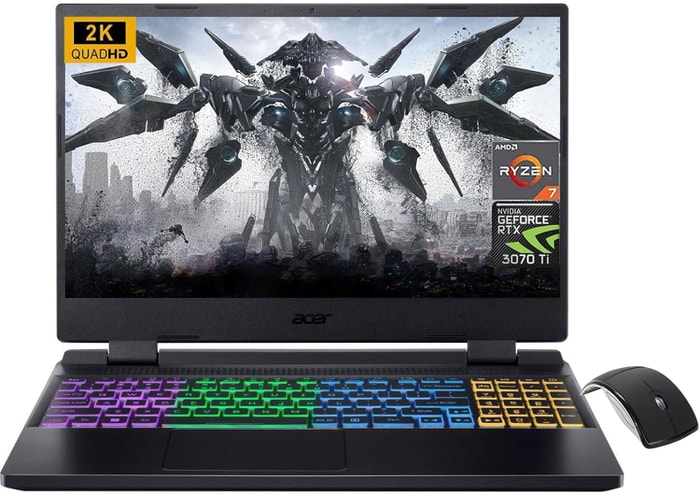 $680
$6801.acer Nitro 5
editing drone footage laptop- One of most affordable laptops with an AMD Ryzen 7 processor
- Sizable 1TB SSD
- No IPS Panel (subpar viewing angles)
Alternatives
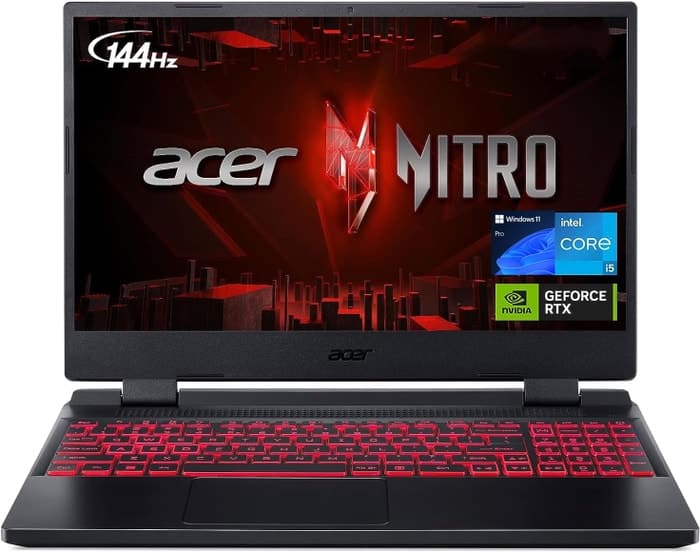
Acer Nitro 5
- Low price
- Steady mainstream gaming performance with 12th Gen CPU and GeForce RTX 3050 Ti
- Core i5 CPU and 512GB of storage are somewhat limited for gaming
- Middling build quality

2.ASUS TUF Dash F15
ASUS TUF Dash F15: A powerful and competitively priced laptop for editing drone footage.- Lightweight and well built
- Good FHD 300Hz and QHD screen options
- Significantly more powerful than previous generation
- Competitively priced
- Quirks affecting everyday ergonomics
- Ports squeezed together on the left edge
- Be cautious of the FHD 144Hz panel option
Summary
The ASUS TUF Dash F15 is a lightweight and well-built laptop that offers good performance for editing drone footage. It has a variety of screen options to choose from, including a FHD 300Hz display. Although there are some quirks affecting everyday ergonomics, it is a solid option for those on a lower budget.
Reviews
Alternatives

Lenovo Legion 5i Pro 16
- Stylish, sleek form factor
- Gorgeous display
- Webcam quality is disappointing
- Lacks biometric features
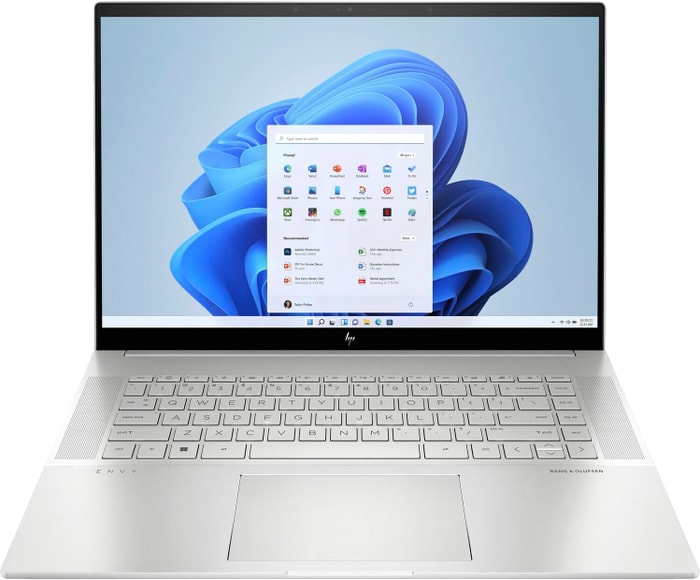 $1,800
$1,8003.HP Envy 16
HP Envy 16: A heavyweight editing powerhouse with top-notch features.- Plenty of CPU and GPU power
- New 120Hz screen refresh rate
- High-res webcam
- Sleek design
- Merely adequate base screen
- Optional OLED has fewer pixels than before
- Bulky and heavy
Summary
The HP Envy 16 is a powerful editing laptop with impressive features like a high-res webcam and a 120Hz refresh rate display. While it may be bulky and heavy, it offers plenty of CPU and GPU power for handling demanding editing tasks.
Reviews
Alternatives

ASUS ROG Strix G15
- High-performance CPU and GPU
- Good workmanship and sophisticated design
- Skimpy connectivity
- Coil whine in certain situations
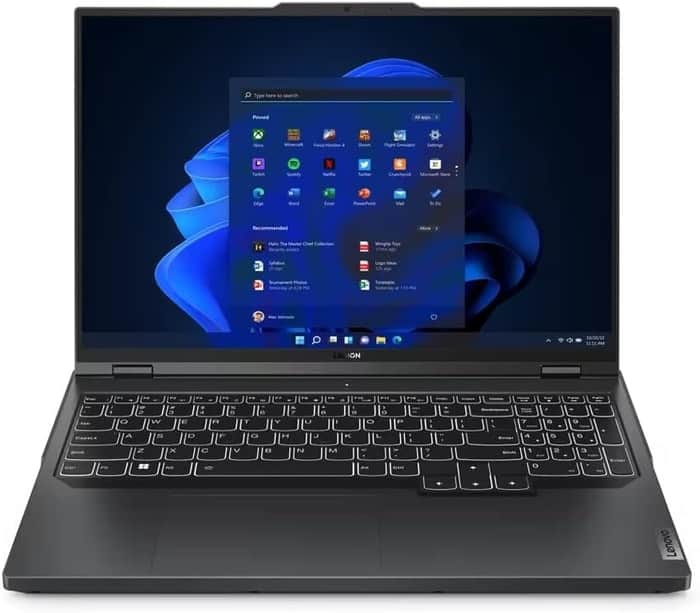
4.Lenovo Legion Pro 5
Lenovo Legion Pro 5i: A well-built editing laptop with good performance and features, but with some drawbacks.- Good build quality and design
- Good screen and IO
- Competent CPU with three GPU options
- Competitively priced
- No Thunderbolt or biometrics
- Hotspots under sustained loads
- Poor speakers
- So-so battery life
Summary
The Lenovo Legion Pro 5i is a competitively priced laptop with a good build quality, a good screen, and plenty of performance for editing drone footage. However, it lacks Thunderbolt and biometrics, has hotspots under sustained loads, poor speakers, and a so-so battery life.
Reviews
Alternatives
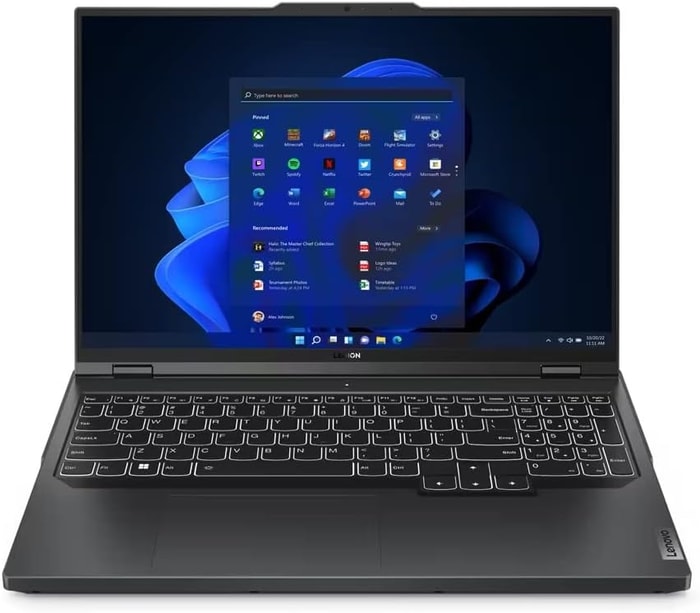 $2,840
$2,840Lenovo Legion Pro 5
- Strong performance for the price
- Quality build and port selection
- Display quality and battery life are just decent
- Bulky and heavy

5.Lenovo Legion Pro 7i 16
Lenovo Legion Pro 7i 16: Powerful performance at a fair price.- Strong overall performance
- Big, bright, and fast display
- Per-key RGB lighting
- Some flex to keyboard deck
- Poor battery life
Summary
The Lenovo Legion Pro 7i 16 offers impressive performance with its i9-13900HX processor and RTX 4090 graphics card, all at a reasonable price. While it may have some limitations with its GPU and battery life, it delivers strong overall performance and a vibrant display, making it a solid choice for editing drone footage.
Alternatives
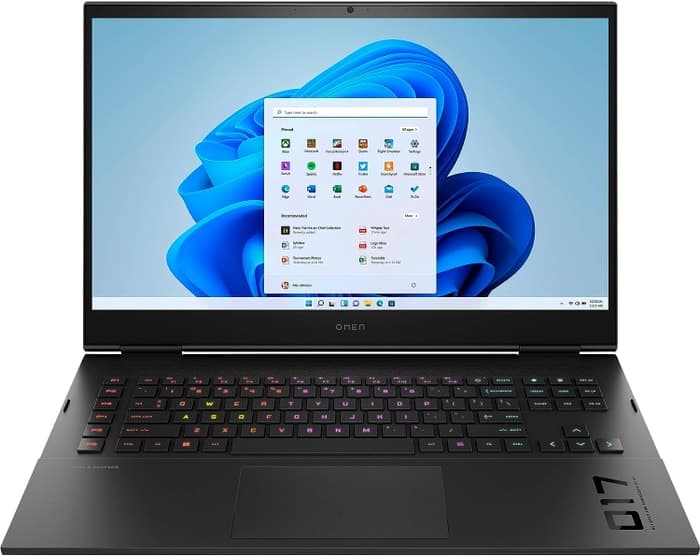
HP Omen
- Slim and relatively portable build
- Midrange gaming performance at a reasonable price
- All-AMD configuration is outpaced by Intel- and Nvidia-based competitors
- Unimpressive 144Hz refresh rate and full HD resolution
Table of the Best Laptops for editing drone footage
| Laptop | Price (approx) |
| acer Nitro 5 | $680 |
| ASUS TUF Dash F15 | $1,160 |
| HP Envy 16 | $1,800 |
| Lenovo Legion Pro 5 | $2,630 |
| Lenovo Legion Pro 7i 16 | $3,390 |

